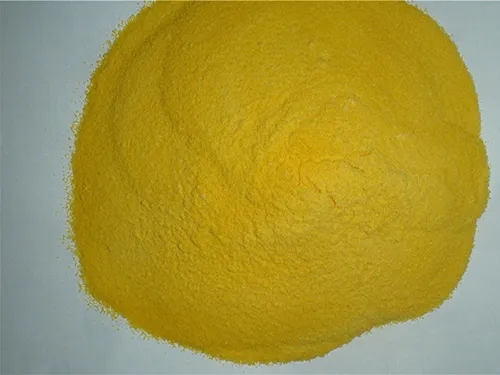Industrial Flocculant: The Key to Optimizing Industrial Processes
Industrial Flocculant, as an important water treatment agent, plays an indispensable role in modern industrial production. It promotes the aggregation of suspended particles, accelerates solid-liquid separation, thereby improving production efficiency, reducing environmental pollution, and optimizing resource utilization. This article will explore the mechanism, types, application areas, and importance of Industrial Flocculant in modern industry.

The mechanism of action of Industrial Flocculant mainly lies in its ability to overcome the stability of colloidal particles and promote their aggregation to form larger flocs
Colloidal particles usually carry static charges, repel each other, and are difficult to settle. Coagulants and flocculants can break this stability through various pathways. Common mechanisms include: electrical neutralization, which neutralizes the charge of colloidal particles through Industrial Flocculant with opposite charges, reducing their electrostatic repulsion; The bridging effect utilizes the long chains of the polymer Industrial Flocculant to connect multiple colloidal particles, forming a network structure; Adsorption: Industrial Flocculant adsorbs onto the surface of colloidal particles, altering their surface properties and promoting adhesion between particles.
According to their chemical composition, industrial flocculants can be divided into three categories: inorganic industrial flocculants, organic polymer industrial flocculants, and microbial industrial flocculants
Inorganic coagulant and flocculant chemicals mainly include aluminum salts (such as polyaluminum chloride) and iron salts (such as iron sulfate), which are inexpensive and widely used. However, the treatment effect is easily affected by pH value and may cause secondary pollution. Organic polymer Industrial Flocculant is usually a synthetic polymer, such as polyacrylamide and its derivatives, with good flocculation effect, low dosage, but high cost and poor degradability. Microbial Industrial Flocculant is an emerging green industrial flocculant that uses polysaccharides, proteins, and other substances produced by microorganisms themselves for flocculation. It has the advantages of safety, non toxicity, and biodegradability, but the production cost is high and the application scope is relatively limited.
The application fields of Industrial Flocculant are very extensive, covering many industries such as mining, papermaking, petrochemicals, textile printing and dyeing, food processing, etc
In the mining industry, coagulant flocculant is used for mineral flotation to improve concentrate recovery and reduce tailings emissions. In the paper industry, Industrial Flocculant is used for fiber recycling, reducing pulp loss and improving paper quality. In the petrochemical industry, Industrial Flocculant is used for the treatment of oily wastewater, removing oil stains and purifying water quality. In the textile printing and dyeing industry, Industrial Flocculant is used for the treatment of dye wastewater, removing chromaticity and COD to meet discharge standards. In the food processing industry, Industrial Flocculant is used for juice clarification, improving the transparency and stability of juice.
In short, coagulation and flocculation play a crucial role in modern industrial production. Choosing the appropriate Industrial Flocculant and optimizing its usage methods can not only improve production efficiency and reduce costs, but also effectively reduce environmental pollution and promote sustainable development. With the advancement of technology, new types of industrial flocculants continue to emerge, such as nano industrial flocculants and magnetic industrial flocculants, which will undoubtedly bring greater development space for industrial wastewater treatment and comprehensive resource utilization. In the future, a more environmentally friendly, efficient, and intelligent Industrial Flocculant will become an important support for industrial production, helping the industry move towards a green and sustainable path.
Industrial Flocculant FAQs
What are the main classifications and applicable scenarios of Industrial Flocculant?
Industrial flotation can be divided into three categories:
1) Inorganic Industrial Flocculant (such as PAC, PFS): suitable for pretreatment of high turbidity wastewater, with low cost but large sludge volume;
2) Organic polymer Industrial Flocculant (such as PAM series): divided into cationic (for treating organic wastewater), anionic (for treating mineral wastewater), and non-ionic (pH sensitive system);
3) Composite Industrial Flocculant (such as PAC+PAM): synergistically enhancing, used for difficult to treat industrial wastewater.
How to optimize the performance of Industrial Flocculant?
Key control parameters:
PH adjustment: The optimal pH range for most industrial flocculants is 68, and strong acid/alkali systems require pretreatment;
Mixing intensity: rapid mixing (G value 300600s ⁻¹) followed by slow flocculation (G value 3060s ⁻¹);
Temperature control: When the temperature is low (<10 ℃), it is necessary to increase the dosage or switch to the low-temperature Industrial Flocculant;
The order of addition: inorganic first, organic second. Industrial Flocculant has a better effect.
Common misconceptions about choosing Industrial Flocculant in industrial wastewater treatment?
Typical misconceptions include:
1) Blindly pursuing high molecular weight PAM (which may cause loose flocs);
2) Neglecting charge matching (should be determined through Zeta potential testing);
3) Excessive dosage (leading to the phenomenon of colloid re stabilization);
4) Neglecting the characteristics of sludge (affecting subsequent dewatering processes).
What type of Industrial Flocculant should be used for special industrial wastewater?
Targeted solutions:
Oily wastewater: cationic PAM+demulsifier;
Printing and dyeing wastewater: modified PAC+anionic PAM;
Electroplating wastewater: heavy metal scavenger+PAM;
Papermaking white water: ultra-high molecular weight anionic PAM;
Petrochemical wastewater: Salt tolerant composite Industrial Flocculant.
What are the development trends of Industrial Flocculant?
Latest technological direction:
1) Intelligent responsive Industrial Flocculant (pH/temperature sensitive);
2) Green biopharmaceutical Industrial Flocculant (such as chitosan derivatives);
3) Nanocomposite Industrial Flocculant (such as SiO ₂ - modified PAM);
4) Precision dosing system (AI control based on turbidity online monitoring);
5) Sludge reduction technology (efficient concentration type Industrial Flocculant).
-
Water Treatment with Flocculant Water TreatmentΝέαJun.12,2025
-
Polymaleic AnhydrideΝέαJun.12,2025
-
Polyaspartic AcidΝέαJun.12,2025
-
Enhance Industrial Processes with IsothiazolinonesΝέαJun.12,2025
-
Enhance Industrial Processes with PBTCA SolutionsΝέαJun.12,2025
-
Dodecyldimethylbenzylammonium Chloride SolutionsΝέαJun.12,2025





